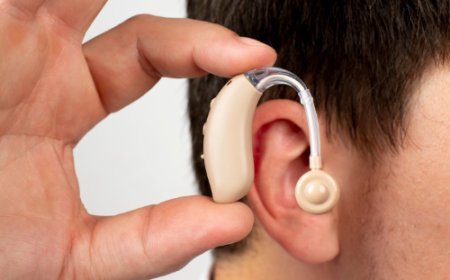The Ultimate Guide to Lifeguard Training and Certification in 2025

In 2025, the importance of qualified lifeguards remains as vital as ever. With the growing popularity of water sports, recreational swimming, and competitive aquatic activities, the demand for well-trained and certified lifeguards has surged across the United States. Whether you're aiming to protect lives at a local pool, oceanfront, or water park, becoming a certified lifeguard is a rewarding career choice that blends athletic ability, responsibility, and lifesaving knowledge.
This comprehensive guide brought to you by American Lifeguard USA, one of the most trusted names in aquatic training, explores everything you need to know about lifeguard training and certification in 2025—from eligibility and course components to tips for success and career opportunities.
Why Lifeguard Training Matters in 2025
In today’s fast-paced, safety-conscious world, lifeguards do more than just sit by the water. They are highly trained professionals tasked with ensuring the safety of swimmers, responding to emergencies, and managing aquatic environments with precision. In a sports context, their presence is vital during competitions, water polo events, triathlons, and open-water marathons.
Lifeguard training not only hones physical endurance but also cultivates leadership, focus, and critical thinking. With American Lifeguard USA, candidates receive modern, sport-integrated training that meets the evolving needs of today’s aquatic environments.
Who Can Become a Lifeguard in 2025?
Lifeguard certification is open to individuals who meet basic age and fitness requirements:
-
Minimum Age: Most programs, including American Lifeguard USA, require candidates to be at least 15 years old.
-
Swimming Ability: Strong swimming skills are essential. Candidates should be able to swim 300 yards continuously, tread water for 2 minutes using only the legs, and retrieve a 10-pound object from a depth of 7–10 feet.
-
Physical Fitness: While not a professional athlete, a lifeguard must be physically capable of handling rescues, CPR, and long hours in the sun.
The American Lifeguard USA Training Advantage
As a leader in lifeguard education for over 30 years, American Lifeguard USA has developed an elite training curriculum that blends athleticism, emergency readiness, and sport-specific scenarios. Their 2025 certification courses are updated with the latest rescue techniques, sport safety protocols, and high-performance training for real-world scenarios.
Key Features of American Lifeguard USA Training:
-
Nationally recognized certification
-
Hybrid learning options (in-person & online)
-
Realistic rescue simulations
-
CPR/AED and First Aid certifications included
-
Courses designed for pools, water parks, beaches, and athletic events
Course Structure: What to Expect in Lifeguard Training
Lifeguard training is designed to challenge both the body and the mind. A typical course with American Lifeguard USA spans 20 to 30 hours, depending on location and format. Here's a breakdown of what you can expect:
1. Water Rescue Skills
This module focuses on active and passive rescues, spinal injury management, and escape techniques. You'll learn how to use rescue tubes, backboards, and communication systems during emergencies.
2. Cardiopulmonary Resuscitation (CPR)
Proper CPR techniques for adults, children, and infants are covered, along with the use of Automated External Defibrillators (AEDs). Emphasis is placed on fast response and hands-on practice.
3. First Aid and Emergency Response
From treating wounds to managing heat stroke and allergic reactions, lifeguards must be prepared for all types of incidents. This part of the course ensures candidates are ready to take charge.
4. Surveillance and Scanning
Effective scanning techniques are key to preventing accidents. Lifeguards are trained to observe swimmers using specific patterns and maintain focus throughout their shift.
5. Sport-Specific Scenarios
Unique to American Lifeguard USA, 2025 courses include training modules for sports events—ideal for lifeguards who want to work at swim meets, triathlons, and aquatic competitions.
Certification Process and Validity
After completing the training, candidates must pass both written exams and skills assessments. These include:
-
Timed water rescues
-
CPR/AED drills
-
First Aid evaluations
-
A final written test on lifeguard responsibilities and protocols
Once certified through American Lifeguard USA, your credentials are valid for two years, after which a recertification course is required. Staying current is essential in a field where every second counts.
Where to Find Lifeguard Training Near You
American Lifeguard USA offers training programs in every major city and state. You can easily find a location using their online portal, which lets you filter by:
-
Zip code or city
-
Training type (Pool, Waterfront, Waterpark)
-
Course dates
-
Instructors and facility ratings
They also offer corporate and group training, which is perfect for sports organizations, schools, and camps.
Tips for Succeeding in Lifeguard Training
-
Train Your Body: Begin conditioning before your course starts. Swimming laps, treading water, and basic calisthenics will prepare you for physical tests.
-
Understand the Material: Review manuals and online modules ahead of class. This will help you pass the written exams with confidence.
-
Practice CPR: Hands-on CPR skills can take time to master. Practice compressions and breathing with dummies or under supervision.
-
Stay Focused: Lifeguards are expected to maintain high levels of attention. Develop your ability to focus during long periods of scanning practice.
-
Ask Questions: Instructors from American Lifeguard USA are highly experienced and approachable. Don’t hesitate to clarify doubts.
Career Opportunities After Certification
Lifeguard certification opens doors to numerous athletic and professional opportunities:
-
Local pools and recreation centers
-
Summer camps and youth sports programs
-
Resorts and cruise ships
-
Competitive swimming and triathlon events
-
Municipal beach and lakefront operations
Experienced lifeguards can advance to become head lifeguards, instructors, or aquatic facility managers. With the sports industry’s growth, there’s a rising demand for lifeguards trained in competition safety and crowd management.
Conclusion: A Lifesaving Career That Makes a Difference
In 2025, lifeguarding is more than a summer job—it’s a skilled profession grounded in athletic performance and life-saving responsibility. With the right training from American Lifeguard USA, you’ll gain the confidence, skills, and certification needed to thrive in any aquatic environment.
Whether you're drawn to the water for sport, service, or a sense of purpose, lifeguard training is your first step toward making a real impact. Dive into a career that saves lives—because heroes don’t always wear capes, sometimes they wear whistles.
What's Your Reaction?




























































